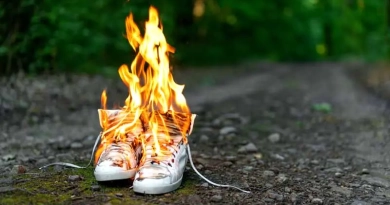
How Do I Plan a Camping Trip?
The quiet whispers of the forest, the crackle of the campfire, and the crisp air that fills your lungs—camping is not merely an escape; it’s a return to the essentials. So, the question stands—how do I plan a camping trip that captures this spirit while ensuring safety and enjoyment?
Camping trips begin long before you set foot on the trail. They start in the quiet moments of preparation, in the lists written at kitchen tables, in maps spread across the living room floor. The core of planning a camping trip lies not just in packing a tent or choosing a campsite, but in understanding the rhythms of nature you’re about to embrace.
Camping Trip Planning Elements
Choosing the Destination: The destination sets the stage for your entire camping experience. When selecting a location, consider what you want from your trip—tranquility, adventure, solitude, or a challenge. The serene shores of a lakeside retreat might offer peaceful fishing mornings and gentle hikes, suitable for families or those seeking relaxation. In contrast, the rugged peaks of mountainous trails provide strenuous hikes and breathtaking views, appealing to those seeking physical challenges or solitude.
Each environment presents unique challenges; lakeside areas might be prone to insects and require careful water safety measures, whereas mountainous areas might deal with rapid weather changes and challenging terrains. This decision will affect every other aspect of your planning.
- Gear: Coastal camping may require gear for water activities, while mountain camping will need robust hiking gear.
- Food: Access to water sources and the duration of activities will influence food planning.
- Activities: The landscape will dictate whether your days are filled with swimming, climbing, or exploring caves.
- Travel Time: Remote locations require more travel, impacting your departure times and overall trip length.
Timing and Weather Considerations: The timing of your trip is pivotal. Seasons affect not only the scenic beauty but also accessibility and safety. For instance, mountain paths that are lush and navigable in summer can become treacherous with ice in winter. Similarly, desert camping is best avoided during peak summer due to the extreme heat.
Weather unpredictability demands respect and readiness. A clear-sky week can suddenly bring torrential rains or a heatwave, both of which can endanger an unprepared camper. Thus, keeping an eye on weather forecasts and understanding regional weather patterns is crucial.
Gear and Supplies: The right gear ensures safety, comfort, and enjoyment. Key considerations include:
- Weight vs. necessity: Balancing the weight of your backpack with essential gear is crucial. Every item must justify its weight by serving a critical function or multiple purposes.
- Survival Essentials: Regardless of the destination, some items are non-negotiable, such as a first-aid kit, a reliable fire starter, a knife, and an emergency shelter.
- Comfort Items: Depending on space and weight, items that increase comfort, like a good book, a lightweight chair, or extra padding for sleeping, might be considered.
The Best Solutions for a Successful Camping Trip
1. Thorough Research: Researching your destination provides insights into what to expect and how to prepare. Utilize national park websites for official guidelines, trail conditions, and permit requirements. Forums and blogs offer real-life experiences and tips from fellow campers. Guidebooks are a valuable resource for understanding the broader context of the camping area, including history, flora, and fauna.
2. Early and Adaptive Planning: Advanced planning is crucial, particularly for popular destinations. Booking campsites, checking permit requirements, and considering alternative dates for flexibility can enhance your experience. Adapting plans according to the latest information closer to the trip date ensures preparedness.
3. Comprehensive Gear Checklist: A detailed checklist tailored to the specific environment ensures you don’t forget essentials. Categories might include:
- Shelter and Comfort: Tent, sleeping bag, mat, and extra stakes.
- Cooking Needs: Stove, fuel, utensils, and food.
- Safety and Navigation: Maps, compass, GPS, and whistle.
- Health and hygiene: first-aid kit, medications, sun protection, and insect repellent.
4. Plan for All Conditions: Expect the unexpected by packing for various weather conditions and potential scenarios. Include layers for cold weather, rain gear for precipitation, and extra food and water in case of extended stays due to weather or injury. Familiarize yourself with emergency exits and local ranger stations.
Essential Resources and Tools
- Reliable Tent and Sleeping Gear: Ensure your tent is suited for the conditions—consider a four-season tent for colder climates.
- Navigation Tools: A GPS device, physical maps, and a compass are essential for safety.
- First-Aid Kit: Customize your first-aid kit based on the length of your trip and the remoteness of your destination.
- Appropriate Clothing: Pack clothing suitable for both the daytime and nighttime temperatures and unexpected weather changes.
- Food and Water Supplies: Plan meals ahead and pack necessary cooking tools. Always have a method for purifying water, whether chemical tablets, a filter, or boiling.
Planning a camping trip is as much about preparing for the unknown as it is about anticipating the joys of the outdoors. Each step of preparation, from choosing your destination to packing your bag, builds the foundation for a journey that could nourish your soul. As I lace my boots and tighten my pack before stepping out the door, I know that each carefully planned element of the trip contributes to the freedom I feel as I walk beneath the open sky, surrounded by the quiet companionship of the trees. With careful planning, the wild becomes a place not just for survival but also for profound living.






